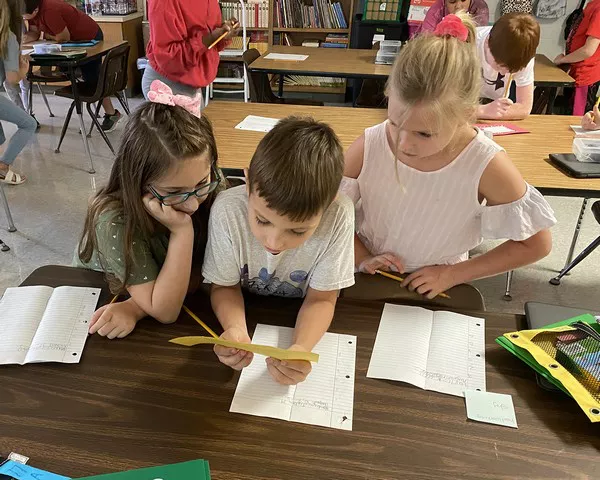The Myers-Briggs Type Indicator (MBTI) is one of the most popular personality assessment tools used in various settings, including the workplace. By understanding individual personality types, organizations can foster better communication, improve team dynamics, and enhance overall productivity. This article delves into the ways Myers-Briggs can be effectively utilized in the workplace to achieve these goals.
Understanding the Myers-Briggs Type Indicator
What is the MBTI?
The MBTI is a self-report questionnaire designed to identify an individual’s personality type based on Carl Jung’s theory of psychological types. It categorizes people into 16 different personality types based on four dichotomies:
- 1. Extraversion (E) vs. Introversion (I)
- 2. Sensing (S) vs. Intuition (N)
- 3. Thinking (T) vs. Feeling (F)
- 4. Judging (J) vs. Perceiving (P)
The 16 Personality Types
Each personality type is represented by a four-letter code (e.g., ESTJ, INFP) that reflects the individual’s preferences in the four dichotomies. These types provide insights into how people perceive the world and make decisions.
Benefits of MBTI in the Workplace
Using the MBTI in the workplace can lead to numerous benefits, including:
- Enhanced self-awareness and personal development
- Improved team collaboration and communication
- Better conflict resolution
- Effective leadership development
- Tailored career development and job satisfaction
Implementing MBTI in the Workplace
Introducing MBTI to the Team
Introducing the MBTI to your team should be done thoughtfully and with clear communication about its purpose and benefits.
Educate and Inform
Provide information sessions or workshops to educate employees about the MBTI, its history, and its applications. Ensure that everyone understands that the MBTI is a tool for self-awareness and team improvement, not a means of labeling or pigeonholing.
Voluntary Participation
Participation in the MBTI assessment should be voluntary. Emphasize that it is a personal development tool and respect individuals’ privacy regarding their results.
Conducting MBTI Assessments
Conducting MBTI assessments involves a few key steps:
Selecting a Qualified Administrator
Ensure that the MBTI assessment is administered by a certified MBTI practitioner who can accurately interpret the results and provide meaningful feedback.
Administering the Test
The MBTI test can be administered online or in-person. It typically consists of a series of questions that participants answer based on their preferences and behaviors.
Providing Feedback
After the assessment, provide individualized feedback sessions where participants can discuss their results with a qualified practitioner. This helps in understanding their personality type and how it influences their work style.
Applying MBTI Insights in Team Dynamics
Building Effective Teams
Understanding the personality types of team members can help in building balanced and effective teams.
Complementary Strengths
Identify the strengths and weaknesses of each personality type to create teams with complementary skills. For example, pairing an INTJ (strategic thinker) with an ESFP (practical and people-oriented) can create a well-rounded team.
Role Assignments
Assign roles and responsibilities based on individuals’ strengths. For instance, ISTJs, who are detail-oriented and organized, may excel in project management roles, while ENFPs, who are creative and enthusiastic, might thrive in marketing or creative roles.
Improving Communication
Effective communication is crucial for team success, and MBTI can provide valuable insights into communication preferences.
Tailoring Communication Styles
Adjust communication styles to match the preferences of different personality types. For example, when communicating with an INTP (analytical and logical), provide detailed and logical explanations. Conversely, when interacting with an ESFJ (warm and supportive), use a more personal and empathetic approach.
Enhancing Listening Skills
Encourage team members to understand and respect each other’s communication preferences. This can lead to more effective listening and fewer misunderstandings.
Managing Conflict
Conflict is inevitable in any workplace, but understanding personality types can help in resolving conflicts more effectively.
Identifying Triggers
Recognize the potential triggers for conflict based on personality types. For instance, an ISTJ (detail-oriented and structured) may clash with an ENFP (spontaneous and flexible) due to differences in work styles.
Mediating Conflicts
Use MBTI insights to mediate conflicts by encouraging team members to appreciate each other’s perspectives and find common ground. Facilitate open and respectful discussions to address underlying issues.
Leadership Development
Effective leadership is crucial for organizational success, and MBTI can play a significant role in developing leadership skills.
Understanding Leadership Styles
Different personality types exhibit different leadership styles. For example, ENTJs (natural leaders) are often assertive and strategic, while INFJs (visionary leaders) lead with empathy and insight.
Tailoring Leadership Development Programs
Develop leadership training programs that cater to the unique strengths and challenges of different personality types. For instance, training for ENTJs might focus on emotional intelligence and listening skills, while training for ISFPs (introverted and sensitive) might emphasize confidence-building and decision-making.
Career Development and Job Satisfaction
Using MBTI insights can help in aligning employees’ roles with their strengths and preferences, leading to higher job satisfaction and career fulfillment.
Individualized Career Paths
Create individualized career development plans based on employees’ personality types. For example, an INFP (idealistic and creative) might thrive in a role that allows for creative expression and aligns with their values.
Enhancing Job Satisfaction
Aligning roles with personality types can lead to higher job satisfaction. Employees are more likely to be engaged and motivated when their work aligns with their natural preferences and strengths.
See Also: Which Is the Most Accurate 16 Personality Test?
Challenges and Considerations
Misuse of MBTI
While the MBTI can be a valuable tool, it is essential to use it correctly to avoid potential pitfalls.
Avoiding Stereotyping
Avoid using MBTI results to stereotype or pigeonhole employees. Personality types provide insights into preferences, but they do not define a person’s abilities or potential.
Ensuring Confidentiality
Respect the confidentiality of employees’ MBTI results. Sharing results without consent can lead to mistrust and resentment.
Continuous Learning and Adaptation
The workplace is dynamic, and continuous learning and adaptation are crucial for maximizing the benefits of MBTI.
Ongoing Training
Provide ongoing training and development opportunities to help employees understand and apply MBTI insights effectively. Regular workshops and refresher courses can reinforce learning and keep the concepts relevant.
Adapting to Change
Encourage flexibility and adaptability in applying MBTI insights. As teams and organizational needs change, revisiting and reassessing the use of MBTI can ensure its continued relevance and effectiveness.
Case Studies and Success Stories
Case Study 1: Improving Team Collaboration
A marketing agency implemented the MBTI to improve team collaboration. By understanding the personality types of team members, they were able to assign roles that played to each person’s strengths. This led to more efficient project management, better communication, and increased job satisfaction among team members.
Case Study 2: Enhancing Leadership Skills
A technology company used the MBTI to develop a leadership training program tailored to different personality types. By focusing on the unique strengths and challenges of each type, the company was able to cultivate a more diverse and effective leadership team. This resulted in improved decision-making and a more inclusive work environment.
Case Study 3: Conflict Resolution
A healthcare organization utilized MBTI insights to address conflicts between staff members. By understanding the underlying personality differences that contributed to the conflicts, they were able to facilitate more productive discussions and develop strategies for resolving future disagreements. This led to a more harmonious and collaborative workplace.
Conclusion
The Myers-Briggs Type Indicator is a powerful tool that can significantly enhance various aspects of the workplace, from team dynamics and communication to leadership development and job satisfaction. By understanding and applying MBTI insights thoughtfully and respectfully, organizations can create a more harmonious, productive, and fulfilling work environment.
Related topics:





























